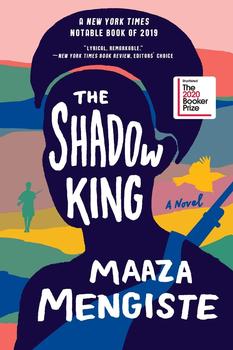Book Club Discussion Questions
In a book club? Subscribe to our Book Club Newsletter!
For supplemental discussion material see our Beyond the Book article, The Fusil Gras (Wujigra) in Ethiopia and our BookBrowse Review of The Shadow King.
Please be aware that this discussion guide will contain spoilers!
- The Shadow King highlights the previously lesser-known role of female soldiers fighting in the Second Italo-Ethiopian War (and in world conflicts more generally). To what extent do you think art is the most useful means of changing existing historical narratives? What are the advantages of using fiction to showcase new aspects of historical experience, versus nonfiction?
- Characters in The Shadow King are anchored by objects that carry great significance for them: Hirut's rifle, Aster's necklace, Ettore's letters. What do you think accounts for the power of these physical objects? Are there any objects in your life that hold a similar kind of strong personal significance?
- What do you think about Kidane's use of the nickname "Little One" for Hirut and, in a flashback, Aster (p. 48)? What do you think he intends to convey by using this phrase, and how do Hirut and Aster respond to it?
- What do we learn about the story of the cook's life through her scenes with Hirut and Aster? Why is the cook the only character in the novel to remain unnamed?
- The ethics of Ettore's work are ambiguous. On one hand, his photographs help him "bear witness" (p. 287) to the violence of war, but on the other hand, Ettore feels increasingly uncomfortable with his work and feels that "every photograph has become a broken oath with himself" (p. 291). To what extent are Ettore's war photographs important records of violence perpetrated, and to what extent are they acts of violence?
- Minim becomes a shadow king for Emperor Haile Selassie, but the novel is full of characters who act as doubles or shadow versions of one another. How many characters in The Shadow King function as the shadow of another character? What do you think comprises or defines a shadow king?
- Why does Emperor Haile Selassie flee Ethiopia? How did the sections from his perspective influence the narrative? Did you feel sympathy for him, anger, some other emotion?
- Aster, Kidane, Leo Navarro, and Haile Selassie have all lost children, and Hirut has lost both of her parents. How does the loss reverberate through their lives, and how do those losses explicitly shape their actions and choices in relation to other characters?
- Inside Hirut's box of photographs are "the many dead that insist on resurrection" (p. 3). How does the theme of resurrection function throughout the novel? To what extent does the novel suggest that resurrection is possible? To what extent is resurrection of memories or secrets in fact inevitable?
- The Shadow King includes many narrative descriptions of and questions about the ethicality of war photographs. Which do you think is a more faithful record of historical experience, photographs or writing? How does the novel influence your feelings about this choice?
- What role do Getey and Fasil, Hirut's parents, play in the narrative of The Shadow King ? How does their memory influence Hirut, and Aster?
- What do you conceive of the relationship between Carlo Fucelli and Fifi? Do you think they loved each other? What are the dynamics of their relationship?
- What was the effect of learning about characters from both the Ethiopian and the Italian sides? How do you think the novel would have been different if it were told solely from Hirut's perspective?
- The chorus says of Aster's relationship to Kidane, "She will learn obedience as a way to survive" (p. 316). Is this true in the end of Aster? Is this true of Ettore, who calls himself "the beast bound by obedience" (351)? How does Hirut subvert the idea of obedience as a survival strategy throughout the novel?
- After learning that Aster helped Hirut's parents to escape, Hirut asks Aster, "And why did you do nothing to help me? Are you so jealous that you have no heart?" (p. 368)? What do you think informed Aster and Hirut's relationship at the beginning of the novel? How has their relationship changed by the novel's end?
- Why do you think Hirut returns forty years later to give Ettore the letters?
Unless otherwise stated, this discussion guide is reprinted with the permission of W.W. Norton & Company.
Any page references refer to a USA edition of the book, usually the trade paperback version, and may vary in other editions.
